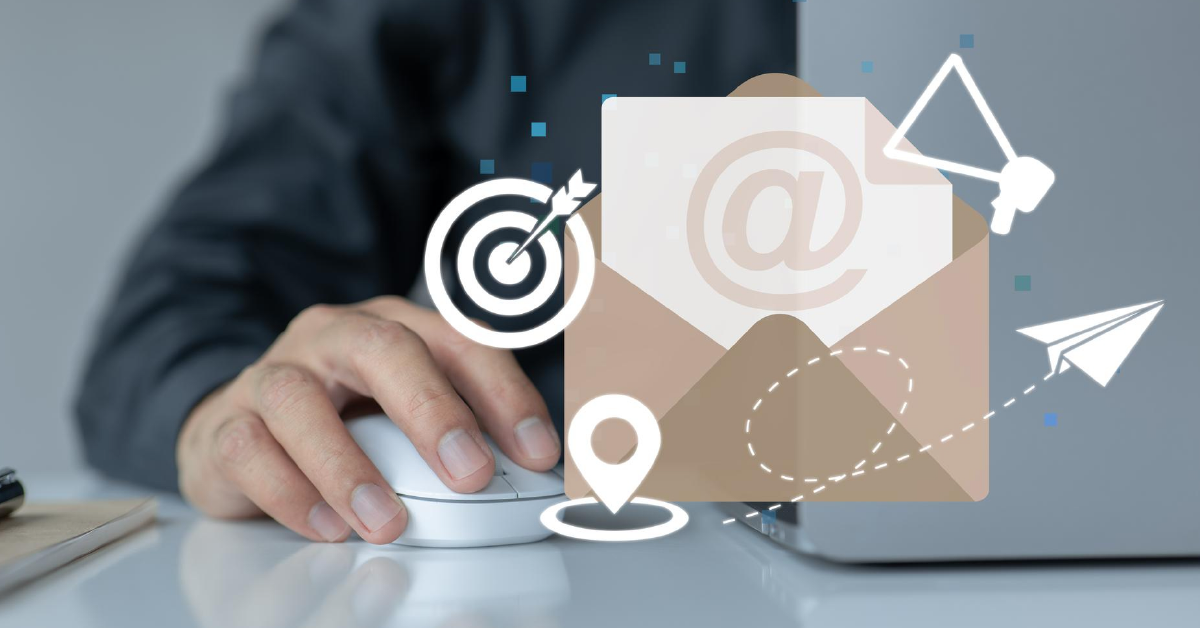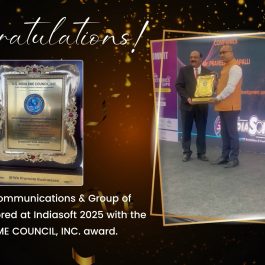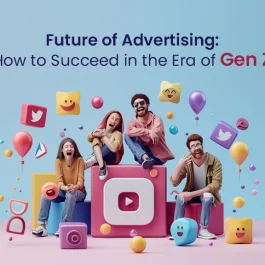6 min read

Email marketing is unquestionably one of the best strategies for ecommerce store owners to increase sales. It is one of the few marketing platforms where you control your audience because they have already chosen to hear from you, and you did not pay to reach them. Therefore, email is a top priority for many newly established and expanding online stores.
But by sending uninteresting emails to the wrong recipients, losing email as a productive and profitable channel becomes more complex.
Table of Contents
Types of Email Marketing
It is a good idea to start by becoming familiar with the basic email formats you can use to communicate with your customers. The effective advantages of email marketing are that it is timely, relevant, and personalized. Emails can generally be sent in one of three categories:
Transactional emails: which contain invoices and additional updates following purchases.
Promotional emails: encompass newsletters, sales emails, and statements about new products.
Lifecycle emails: which are determined by the actions of a customer,
Making and optimizing all these potential emails can be overwhelming for someone who has never built an email marketing strategy from scratch. It is also true that you can send numerous variations of emails within each category; even a cursory look at the campaigns carried out by well-known companies demonstrates just how varied options are available.
Most of the “parts” that make up an effective email, such as the subject line, preheader, body of the email, images, a call to action, etc., must be remembered to be consistent across all your emails. A few tried-and-true best email services for businesses can help you start enhancing the results of almost every email you send.
How to Design an Email: What Matters Before the Game Begin!
One common error is concentrating only on the body of a marketing email. Although the content of your email is crucial, you must first persuade your subscribers to open it before they can view it.
If subscribers open your email, it will mostly depend on three things:
- What you put in the subject line and preheader text
- When they receive your email,
- How to segment your email list into different groups so that you can send the appropriate emails to the right people.
Email Subject Lines That are Clicked
There is an important function for the subject line of your email. It might be the most important factor influencing whether a subscriber opens your email. Even the best email will get lost in your subscribers’ inboxes if the subject line does not inspire action.
Subject lines, therefore, merit giving them more careful thought than many businesses do. Because of its significance, email marketers have fortunately conducted extensive research on the best subject lines. These are our tips:
To avoid confusion, be clear-headed. Although a little intrigue is acceptable, your subject line should be specific about the email’s contents rather than relying too heavily on ambiguous, opaque copy. Misunderstandings should not be possible.
Keep it brief: By roughly adhering to that character limit, you can ensure your message is noticed. After 55–70 characters, subject lines on mobile email services are cut off.
Clickbait is not clickable: When you want many email opens, it is easy to oversell the information in your message. Open rates are useful, but only when they point subscribers toward your call to action rather than deceiving them into unsubscribing.
Pose queries: According to studies, subscribers are likelier to click on subject lines asking a question.
Testing A/B: Test whenever possible. You can learn more about your audience’s response by running this through your subject lines.
How to Attract Clients by Email Marketing
Division of Emails
Although email segmentation may seem complicated, it involves dividing your email subscribers into more focused groups. Furthermore, segmenting your list is a simple process with most email marketing services.
It enables you to send more customized emails to the appropriate recipients at the proper time, increasing the likelihood that each email you send will result in a conversion for your customers. One can split your email list into different groups according to other criteria, like:
- Type of client
- a passion for certain subjects or goods
- Location
- Degree of involvement
For instance, you could designate a specific email segment for new subscribers who have yet to purchase. First-time discounts may be included in these emails since your component aims to establish trust and encourage new subscribers to make their first purchase.
Long-term, devoted customers who frequent your store and spend a lot of money with you can make up another segment of your target market. You can concentrate on expressing your gratitude for them and highlighting products they might be interested in since you will not need to offer discounts to persuade those customers to purchase.
Email Content Guidelines
Your emails should now have a compelling subject line, arrive at the ideal time for the right recipients, and fulfil the promises made in the subject line. More factors are at play here than just what your email says. Additionally, it pertains to your delivery style and the format of your message.
Composing Readable Body Copy
It would help if you made good on any promises in the subject line of the email’s body copy. An email’s contents must keep the subscriber interested in it to succeed, regardless of how intriguing the subject line may be.
The email body should always be engaging, succinct, and on brand.
Your email’s copy must persuade readers to respond to the prompt or call to action within a reasonable time. Because of this, it is critical to use a purposeful hierarchy of information, placing the most crucial information first and providing more detail later.
To make clear, easy-to-read sections in your email, it is crucial to format the copy you use:
- Start with a single, simple offer.
- Utilize white space to create shorter paragraphs that are more enticing
- Use headings, bullet points, and a clear content hierarchy to make text readable.
- To draw attention to important phrases, be bold and use your formatting tools strategically, such as bolding or highlighting text.
Use Images in Email
Images can help you communicate your point. However, they can also lengthen email loads and interfere with formatting on mobile devices. The trick is to only include images in emails when and where they benefit the communication—when an image can better express your point than text can.
Utilize small image files in that situation. Many email specialists advise image sizes of at most 1MB. You should always include alt text for any images because some email providers prevent prints from being displayed by senders who are not in a subscriber’s contacts. This ensures that recipients know what an image is and can click to view it if they are interested.
Optimizing for Mobile and Using Responsive Design
Today, responsive email design for mobile devices is standard practice. Approximately 60% of all emails opened in recent times came from mobile devices, which is only expected to rise. Mobile commerce has generally made it easy for consumers to browse and buy products using their phones.
Thankfully, almost all email marketing platforms make it incredibly simple to design responsive emails. Frequently by letting users choose from responsive templates or by selecting an option to optimize emails for mobile automatically.
Utilizing Powerful Calls to Action (CTAs)
Calls to action clarify what you want the reader to do after reading your email and offer guidance on how to do it (typically through a link or button). Each campaign’s main objective is reflected in the CTA.
Whether it is making a specific purchase, giving feedback on a recent purchase, or doing something entirely else, your emails encourage subscribers to do that. Here is some advice for CTAs in emails:
Prioritize a single CTA per email: A single primary action should be the focus of each campaign. The reader may need to be more focused and understand each additional call to action.
Use active language to convey urgency: Like anything else, the key to getting customers to take action is to instill a sense of urgency. This could entail highlighting the “limited time” of a certain sale, the “limited number” of stock available for a product, and verbs like “Buy now” or “Start now.”
Utilize a recognizable button image: Your CTA must pop out among the other email copies. It can be noticed using a button image (rather than a text link) and vivid, contrasting colors. Additionally, it is a good idea to position the button away from the bottom of an email with little white space.
Email Performance Evaluation
One of the most crucial best practices to follow is measuring email performance because it is the only way to improve email marketing campaigns. Conveniently, it is simple to track how well your emails are performing. It all comes down to monitoring the appropriate metrics and knowing what they mean for your emails.
The Four Primary Email Marketing Analytics You Should Monitor are Listed Below:
Open Rate: The percentage of recipients who clicked on an email.
Bounce Rate: The proportion of emails that are either blocked by spam filters, technical issues, or inactive subscribers’ email accounts and do not reach their inbox
Click-through Rate: the proportion of recipients who open your email and click any link
Opt-Out Rate: The proportion of subscribers who removed themselves from your email list
The only email marketing metrics that matter are your own. It can be useful to know how your performance stacks up against that of other e-commerce companies so that you can create smart, doable goals to raise it.
Best Practices for Email Automation
Create an auto-responder that reminds people they have opted into your email database. If you anticipate that some of your readers will forget they have done so. The auto-responder ought to be sent out one day, five days, and ten days following the person’s registration. Otherwise, your readers might not be sufficiently motivated to opt in. Each auto-responder email should also include bonus content or recommended reading to thank the reader for signing up for the newsletter.
Conclusion
Refine each marketing email that you send out. As a business owner, you may send various email marketing campaigns, each with its own special objectives and strategies. However, the advice and recommendations listed above are essentially universal. So you can use them to improve the effectiveness of any email campaign. More sales, better campaigns, and better emails result from this.
Published: September 13th, 2023








